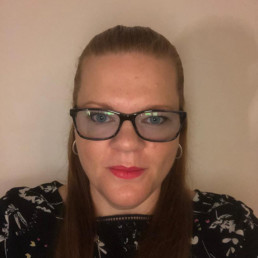
Written by Paula Tankard
Headteacher and has worked as a SIP for local schools
Diversity
Diversity is often referred to in terms of ‘people who look different’. However, not all diversity is visible. This think piece is about a different side to diversity, one that is less visible. I believe that more conversations about diversity and inclusion have happened in schools in the past term than ever before – and this is great. People know more about the Equality Act (2010) and are implementing the recommendations. Many educators can name all of the protected characteristics listed in the act. There are nine, and it is against the law to discriminate against someone because of:
Marriage And Civil Partnership
I am a teacher and headteacher and I also happen to be gay. When a protected characteristic is visible you don’t have to include this in your introduction to various stakeholders. However, when your characteristic is invisible there is a disclosure dilemma.
Disclosure
When do I say it when I introduce myself ‘Hello I’m the new headteacher and I’m gay’? Clearly not, so how do I do it? Do I rely on staff room gossip to do the job for me? A casual comment to the ‘right’ person at 8:30am could mean that the whole school knows by playtime. Each time I have done it differently so clearly there is no right or wrong way and it is up to each individual to find a way that works for them. For both of my headteacher roles I told the chair of governors first and then we agreed a plan about when and who I would tell. Then I spoke to the leadership team in the first meeting and they mentioned it to others.
Who do I tell? Do I tell staff but not the parents? Should I tell the children? Some might say ‘well it is none of their business’ and to a certain extent I agree. In both of my headteacher roles it has been left up to me who I want to tell and in both cases the staff were told and as there were staff who were parents so most of the parents were aware but the children were not specifically told. I had an open discussion with the chair of governors about this decision, I explained that in an appropriate situation if a child asked that I would not lie and would talk to the child in an age appropriate manner. When I was class based, I worked for heads who put a clear ban on any staff talking about their life outside of school with any of the stakeholders, there was even a ban on personal photographs visible in classrooms. Other heads have said it is up to individual staff what they want to reveal.
Early in my teaching career I was specifically told by the deputy head that I could not reveal my sexuality to any pupils or parents from the school. This was said because ‘Parents would not want me to be in the classroom when children are changing for PE, as I would see girls in their underwear.’ I did question if they thought being a lesbian was the same as being a paedophile, although this question wasn’t answered and I received an apology, it had still been said. The lasting effect of this statement was a reluctance for me to tell anybody at work who I am.
Invisibility
There are many characteristics that are clearly visible, some that are sometimes visible and some that are completely invisible. So if you have one of the invisible characteristics you have to tell people for them to know.
It has been my experience that leaders and governors have no clear plan on how to manage this. They have perhaps not thought through who and when staff should reveal their invisible protected characteristics to, and are somewhat hesitant to speak to staff about it. This may be because of the fear of offending somebody and being accused of homophobia and I understand that. I would have preferred to have been asked about it before I started work so that we were all clear.
It would have prevented a very awkward situation for me. Before I moved into leadership I taught Year 6, during a PHSE lesson I was asked if I had got married in the holidays, to which I replied yes. The child then asked me was it to a man, or a woman? I was flummoxed. Not by the answer but by – what am I allowed to say? If this has been discussed before it would have prevented my jumbled answer of yes and then me having to go and see the head to explain that I had just ‘outed’ myself to my class.
What now?
I have listened to various facilitators and trainers talk to school staff and leadership teams to say ‘You need to have people who look differently on your SLT, staff or governing body’.
‘You need visible role models for the children in the school from Black, Asian and Minority Ethnic communities’. I do not disagree, and have said the same thing myself. However, I wonder if the focus on ‘look’ means that other protected characteristics are overshadowed?
So I ask that when you discuss diversity in school, during assemblies, staff meetings and governor meetings, please talk about people who are different not just about those who look different. Make sure you include all protected characteristics in your presentation and discussion.
As leaders have a plan to support staff with invisible protected characteristics. Talk to them, guide them with their inevitable disclosure dilemmas and support their decisions.

